SM Coupler ZNDC — Technical Guide to the Zinc Die-Cast One-Way Pneumatic Coupler with Automatic Shut-Off
Product: SM Coupler ZNDC
Short description: A zinc (ZnDC) one-way pneumatic coupler with built-in automatic shut-off valve for connecting compressed-air piping and hose connections for pneumatic tools and plant air distribution. Available in chrome-plated ZnDC, steel, and brass with multiple thread sizes.
Introduction
The SM Coupler ZNDC is a purpose-engineered quick coupler intended for compressed air systems where fast, safe, and low-leakage connection/disconnection is required. Designed for one-way operation, the SM Coupler ZNDC integrates an internal automatic open/close shut-off valve that minimizes downstream air loss on disconnect and enhances operator safety. Offered in chrome-plated zinc die-cast (ZnDC), steel, and brass variants, and in commonly used thread sizes (PT 1/4, PT 3/8, PT 1/2), this coupler addresses the needs of industrial workshops, manufacturing plants, service bays, and mobile pneumatic applications.
This technical article provides an in-depth view of the SM Coupler ZNDC: how it works, technical specifications, materials and build quality, installation and maintenance guidance, typical applications, comparisons with alternative coupler types and materials, and a balanced view of benefits and limitations. The content is optimized for engineers, maintenance professionals, procurement specialists, and technical decision-makers who require accurate, actionable information about pneumatic couplers.
Technical Overview
The SM Coupler ZNDC is a one-way quick coupler that implements a spring-loaded automatic shut-off valve inside the coupler body. When a compatible plug (socket) is inserted, the internal valve opens, allowing compressed air to pass. On plug withdrawal, the valve seats against the valve seat and shuts off the flow, preventing significant downstream pressure loss. This functionality is especially beneficial where multiple tools or hoses need to be connected/disconnected frequently or where sudden air release could pose a hazard or create contamination risk.
Key functional attributes:
- One-way operation: The coupler permits flow only when a mating plug is fully engaged. In one-way configurations, the valve inside the coupler prevents backflow from the tool/hose when disconnected.
- Automatic shut-off valve: A spring-loaded poppet or ball-seat assembly closes automatically on disconnection to capture residual pressure downstream and reduce air loss.
- Quick-connect interface: The plug/socket geometry is designed for fast, tool-less engagement and disengagement. The coupling mechanism is optimized for smooth operation and reliable retention under vibration and operational loading.
- Material options: The standard SM Coupler ZNDC is zinc die-cast with chrome plating to enhance corrosion resistance; alternate material options (steel and brass) are available for environments with different mechanical or chemical exposure profiles.
Operational media include compressed air, water, and oil (within the stated pressure and temperature limits). The standard working pressure rating is 0–150 PSI (0–990 kPa), with an operational temperature range of 32–140 °F (0–60 °C). The coupler features PT (pipe thread) sizes compatible with common pneumatic systems: SM 20 (PT 1/4), SM 30 (PT 3/8), SM 40 (PT 1/2).
Specifications and Dimensions
Below is a consolidated table of the technical specifications and component dimensions for the SM Coupler ZNDC family. Dimensions are typical nominal values for guidance; consult the manufacturer’s engineering drawing for precise tolerances and thread detail.
| Model | Thread (PT) | Nominal Bore (mm) | Overall Length (mm) | Outside Diameter (mm) | Approx. Weight (g) | Rated Working Pressure | Temperature Range | Typical Flow Capacity at 90 PSI (SCFM) | Typical Cv (approx.) |
|---|---|---|---|---|---|---|---|---|---|
| SM 20 | PT 1/4 | 4.0 | 45 | 22 | 45 | 0–150 PSI (0–990 kPa) | 32–140 °F (0–60 °C) | 10–15 SCFM | 0.08 |
| SM 30 | PT 3/8 | 6.0 | 55 | 28 | 70 | 0–150 PSI (0–990 kPa) | 32–140 °F (0–60 °C) | 18–28 SCFM | 0.16 |
| SM 40 | PT 1/2 | 8.0 | 65 | 35 | 110 | 0–150 PSI (0–990 kPa) | 32–140 °F (0–60 °C) | 35–50 SCFM | 0.28 |
Notes on table entries:
- Nominal bore is the internal flow diameter of the coupler when open; actual internal geometry and flow passages will influence effective flow capacity and pressure drop.
- Flow capacities (SCFM) are typical continuous flow ranges at ~90 PSI inlet pressure and are provided for comparative sizing — actual flow depends on system supply pressure, hose length, connectors, and tool demand.
- PT threads correspond to pipe threads used in many pneumatic systems (commonly BSPT), and may require thread-sealing tape or compound for gas-tight installations.
Materials and Build Quality
The SM Coupler ZNDC is produced in multiple material configurations to accommodate different application conditions. Understanding material characteristics and the manufacturing process is essential for specifying the appropriate variant for your environment.
Zinc Die-Cast (ZnDC) — Chrome Plated
Standard SM Coupler ZNDC bodies are manufactured from zinc die-cast alloys (commonly Zamak family alloys) and supplied with a chrome-plated finish. Zinc die-cast offers several advantages:
- Cost-effective production: Die casting enables economical shaping of complex geometries with high repeatability.
- Dimensional stability: Tight tolerances and consistent external features facilitate reliable mating and interchangeability.
- Corrosion resistance with plating: Chrome plating provides a barrier against oxidation and wear; typical electroplated chromium layer thickness falls in the micrometer range (commonly 1–10 μm, depending on supplier specifications).
- Good surface finish and appearance: Chrome plating improves visual quality and eases cleaning.
Limitations of ZnDC:
- Zinc alloys have lower tensile strength and impact resistance than steel; they are suitable for normal workshop use but not recommended where high mechanical abuse or very high temperatures are expected.
- Galvanic corrosion risk exists when zinc is mated to dissimilar metals in wet or chemically aggressive environments unless appropriate isolation measures are used.
Steel Variant
For high-mechanical-stress applications, an all-steel coupler body option is available. Steel provides superior strength, impact resistance, and wear performance relative to ZnDC. Typical surface finishes include nickel or zinc plating and passivation to provide corrosion resistance.
Advantages:
- Higher fatigue, tensile and impact strength.
- Better resistance to abrasion and mechanical deformation.
- Improved service life in heavy-duty assembly lines, automotive test rigs, and construction equipment.
Considerations:
- Steel is heavier and typically more costly than ZnDC.
- Surface finish selection is important to avoid rapid corrosion in humid or corrosive atmospheres.
Brass Variant
Brass couplers are recommended where corrosion resistance, non-sparking characteristics, and compatibility with potable water are important. Brass provides good machinability and moderate strength.
Advantages:
ul>
Trade-offs:
- Brass is softer than steel — thread deformation can occur if components are over-tightened.
- More expensive than ZnDC in many cases.
Seals and Internal Components
Internal seals and elastomers critically affect coupler performance, leak rate, and media compatibility. Typical SM Coupler ZNDC configurations use nitrile (NBR/Buna-N) seals as the standard elastomer due to their good oil and air compatibility and cost-efficiency. For applications requiring higher chemical resistance or elevated temperatures, fluoroelastomer (Viton®/FKM) seals can be specified as an option.
- Standard seals: Nitrile (NBR) — suitable for compressed air, general oils; operating temperature typically -20 °C to +80 °C.
- Optional seals: Viton (FKM) — better chemical resistance and higher temperature capability; suitable for hydraulic oils, fuels, and higher-temperature environments.
Key Features
Below are the principal features of the SM Coupler ZNDC that make it suitable for industrial pneumatic applications.
- Automatic one-way shut-off: Internal valve prevents downstream venting on disconnection, conserving air and reducing noise.
- Quick-connect/disconnect: Tool-less operation for fast changeovers, reducing downtime in production or maintenance tasks.
- Multiple material options: ZnDC with chrome plating, steel, and brass variants cover a wide range of environmental and mechanical requirements.
- Compatibility with common thread sizes: PT 1/4, PT 3/8, and PT 1/2 options for direct integration into standard pneumatic piping and hose fittings.
- Low pressure drop: Optimized internal flow geometry to minimize pressure loss and support tool performance.
- Serviceability: Replaceable seals and internal poppet assemblies simplify maintenance and extend service life.
- Robust retention mechanism: Secure locking under vibration and dynamic loading.
Use Cases and Applications
The SM Coupler ZNDC is versatile and finds application across numerous sectors. The automatic shut-off and one-way behavior make it especially useful in environments that prioritize safety, leak minimization, and frequent tool changes.
Industrial Manufacturing and Assembly
In manufacturing lines where automated tools and hand tools are used, the SM Coupler ZNDC enables quick tool exchange with minimal air loss. The one-way valve function is valuable for maintaining pressure in test rigs or sections of piping that should remain pressurized when tools are disconnected.
Automotive Workshops and Repair Shops
Mechanics frequently connect/disconnect pneumatic wrenches, ratchets, and tyre inflation tools. The SM Coupler ZNDC reduces air wastage at the bench and improves safety by preventing hose whip and sudden air blowback when disconnecting under residual pressure.
Field Service and Mobile Applications
Truck- and trailer-mounted air systems benefit from the ZnDC variant for weight savings and cost; brass or steel variants may be selected for highly corrosive marine or offshore environments. The quick-connect feature facilitates rapid setup and teardown on service calls.
Laboratory, Test, and Instrumentation
In test fixtures where sections of a pneumatic circuit must stay pressurized independently, the one-way automatic shut-off maintains test conditions when changing instrumentation or isolating a downstream load.
Food, Beverage, and Water Systems
Brass variants, when supplied with appropriate seal materials, can be used in potable water lines and food-processing pneumatic circuits where non-ferrous materials are preferred.
Construction and Heavy Equipment
Steel variants offer the resistance necessary for construction tool couplers and heavy equipment pneumatic systems exposed to harsh mechanical loading.
Comparison: SM Coupler ZNDC Variants and Alternative Coupler Types
The following comparison table contrasts the SM Coupler ZNDC in its material variants and compares the product class to common alternative coupler types, helping engineers select the correct configuration for their application.
| Attribute | SM Coupler ZNDC (ZnDC, Chrome) | SM Coupler (Steel) | SM Coupler (Brass) | Flat-Face Coupler (General) |
|---|---|---|---|---|
| Typical Use | General workshop, plant air, light industrial | Heavy-duty industry, harsh mechanical conditions | Water service, non-sparking, corrosion environments | Hydraulic/pneumatic systems minimizing fluid loss and contamination |
| Corrosion Resistance | Moderate (chrome plating improves resistance) | Depends on plating; can be high with proper coating | High (brass inherently corrosion resistant) | Varies by material; often stainless or plated steel |
| Mechanical Strength | Medium | High | Medium | High (designed for hydraulic pressures) |
| Leakage on Disconnect | Minimal (built-in shut-off) | Minimal | Minimal | Very low (flat-face minimizes residual fluid loss) |
| Weight | Light | Heavy | Moderate | Varies |
| Typical Applications | Compressed air tooling, general-purpose | Construction equipment, heavy duty tools | Water lines, food service, non-sparking needs | Hydraulics, fluid-critical processes, expensive fluids |
Guidance:
- Choose ZnDC for cost-sensitive, general-service compressed air installations where mechanical abuse is moderate.
- Choose steel when mechanical robustness and resistance to impact and wear are primary requirements.
- Choose brass for corrosion resistance, non-sparking environments, or water/potable systems.
- Consider flat-face couplers for fluid-critical systems where minimization of fluid spillage and contamination is paramount; note that flat-face couplers are often more complex and used in hydraulic applications rather than general compressed air services.
Benefits and Limitations — Technical Insights
Benefits
- Operational efficiency: Reduced air loss on disconnect lowers compressor runtime and energy cost over time in systems with frequent hose/tool changes.
- Safety: Automatic shut-off reduces the risk of hose whip, unexpected tool movement, and worker exposure to sudden high-pressure air release.
- Ease of use: Tool-less coupling simplifies field operations and lowers the time required for maintenance or tool changes.
- Material flexibility: Multiple materials provide the ability to match coupler selection to environmental and mechanical demands.
- Serviceability: Replaceable internal seals and valve assemblies reduce total cost of ownership by enabling repair rather than replacement.
Limitations
- Temperature and media constraints: Standard seal materials (NBR) limit operation to moderate temperature and chemical exposure ranges; hot fluids or aggressive chemicals require upgraded seal materials.
- Mechanical limits of ZnDC: Zinc die-cast bodies are not as mechanically robust as steel, so high-impact installations may need steel variants.
- Potential galvanic corrosion: Mixed-metal assemblies in corrosive environments require isolation or sacrificial protection to prevent galvanic degradation.
- Pressure range: Rated to 150 PSI; applications requiring higher pressures (e.g., some hydraulic or high-pressure pneumatic systems) may need alternative coupler families rated for higher pressures.
Selection Guide: How to Choose the Right SM Coupler ZNDC Variant
Selecting the optimal SM Coupler ZNDC depends on application variables. Consider the following decision points:
- Operating media: If only dry compressed air is used, standard NBR seals are suitable. For water or oil, confirm seal compatibility. For aggressive chemicals or high temperature, request Viton or other compatible elastomers.
- Operating pressure and duty cycle: Verify the system pressure does not exceed 150 PSI and determine duty cycle — higher duty cycles favor steel variants for longevity.
- Mechanical environment: If the coupler is exposed to heavy knocks, drops, or high vibration, choose steel for mechanical durability.
- Corrosion environment: For outdoor marine or corrosive chemical exposure, brass or corrosion-resistant plated steel is preferred.
- Thread compatibility: Choose the appropriate PT thread size (PT 1/4, PT 3/8, PT 1/2) to match existing piping or hose fittings. Confirm whether PT refers to BSPT or another thread standard in your region and select accordingly.
- Flow demand: Size the coupler by required flow (SCFM) at the working pressure. Use the flow capacity table to select the model that will not create excessive pressure drop for tools in use.
Installation and Commissioning
Proper installation ensures long-term reliability and leak-free performance.
Installation Steps (Recommended)
- Inspect coupler and mating plug for visible damage, foreign material, or missing components.
- Confirm thread type and size. If PT (BSPT) threads are specified, use appropriate thread sealant (PTFE tape or a compatible pipe joint compound) applied in the correct direction to protect gasket and valve internals.
- Hand-start the thread to avoid cross-threading. Use a wrench to tighten to the recommended torque — if manufacturer torque is unavailable, tighten one to two full turns beyond hand tight, then check for leaks under pressure. Avoid over-tightening which can deform threads or the coupler body (especially for brass and ZnDC).
- After installation, pressurize the circuit slowly and inspect for leaks at threads and around the coupler body and seals. Use a soap solution or approved leak-detection fluid for small leak detection.
- Cycle the coupler under load (connect and disconnect plug several times) to verify smooth operation and proper seating of the internal valve.
Safety Considerations
- Do not connect or disconnect under excessive pressure beyond the coupler’s rated limits.
- Ensure that hoses and tools are supported to prevent strain on the coupler during operation.
- In applications with flammable or combustible media, verify the coupler material and seal ratings and follow local safety standards for non-sparking and intrinsically safe equipment.
Maintenance and Care Guide
Regular maintenance extends service life and ensures safe, reliable service. Below are professional maintenance recommendations and troubleshooting steps designed for the SM Coupler ZNDC family.
Routine Maintenance Schedule
- Daily / Pre-shift: Visual inspection for obvious damage, dirt, or significant wear. Remove large debris from coupler face before connecting.
- Weekly: Clean exterior surfaces with a lint-free cloth. Confirm that moving parts are free and not corroded. Check for audible leaks during normal operation.
- Monthly: Inspect seals and replace if showing signs of wear, hardening, or cracking. Confirm that coupler retention mechanism (collar or ball bearings) operates smoothly.
- Annually or based on duty cycle: Perform full disassembly, clean internal components, lubricate moving parts with a light pneumatic-grade oil compatible with seal material (avoid silicone oils with certain elastomers), and replace seals and springs as necessary.
Seal Replacement and Lubrication
When replacing seals:
- Use manufacturer-specified seal kits. If unavailable, match seal dimensions and elasto-mer properties precisely.
- Choose seal material appropriate to media and temperature (NBR for general service, FKM for high temperature/oil resistance).
- Apply a thin coat of compatible lubricant to new seals prior to assembly to prevent pinching and to ensure initial sealing performance.
Cleaning
- Clean coupler interfaces with compressed air and a lint-free cloth. Avoid solvents that can degrade seals (check seal compatibility).
- For heavily contaminated systems, consider flushing with a clean, compatible fluid prior to disassembly to remove grit and particulates.
Troubleshooting
| Symptom | Likely Cause | Recommended Action |
|---|---|---|
| Leaking at thread joint | Insufficient thread sealant or cross-threading | Depressurize, disassemble, reapply PTFE tape or compound, rethread carefully |
| Continuous leak from coupler face when disconnected | Worn or damaged internal valve/seals | Replace internal seals/poppet assembly; verify seating surface integrity |
| High pressure drop or insufficient flow | Undersized coupler for flow demand; internal obstruction | Check for debris, verify model sizing vs. flow requirement; upgrade to larger model if necessary |
| Stiff or inoperative coupling action | Corrosion, dirt, or dried lubricant in moving parts | Disassemble, clean, apply compatible lubricant, replace corroded parts |
| Excessive noise or vibration | Loose mating parts or worn retention mechanism | Inspect and tighten mounting hardware, replace worn retention components |
Compatibility, Standards, and Regulatory Considerations
While the SM Coupler ZNDC is designed to work with common pneumatic fittings and PT thread sizes, confirm the following when integrating into an existing system:
- Verify thread standard (PT commonly references BSPT in many regions) — ensure mating threads match in form and pitch to avoid leaks or mechanical failure.
- Confirm seal material compatibility with fluids present (including compressor lubricant entrainment) and environmental chemicals (cleaning agents, solvents).
- Check workplace safety and equipment standards that apply to your industry (for example, OSHA guidance in the United States, or ATEX/IECEx if using in explosive atmospheres — consult product certification if needed).
- For potable water or food-processing applications, ensure material and seal compliance with relevant regulations (e.g., NSF, FDA) when required.
Lifecycle and Total Cost of Ownership Considerations
When selecting couplers, the initial price is only one factor; consider total cost of ownership (TCO) over the expected lifecycle.
- Energy savings: The SM Coupler ZNDC’s automatic shut-off reduces wasted compressed air during frequent disconnects; over many cycles this can materially reduce compressor runtime and energy costs.
- Maintenance costs: Replaceable seals and user-serviceable internals reduce the need for full-body replacement, saving on parts and labour.
- Downtime costs: Quick-connect operation reduces tool-change time and can reduce production downtime.
- Material selection effect: Choosing a variant that matches the mechanical and corrosive environment minimizes premature failure and replacement costs.
Frequently Asked Questions (Technical)
Can the SM Coupler ZNDC be used with vacuum or negative pressure?
The SM Coupler ZNDC is specified for compressed air, water, and oil within the working pressure and temperature range. While the coupler may function under vacuum conditions, its internal valve design and seal materials are optimized for positive pressure service. For applications that routinely use vacuum, consult the manufacturer to confirm suitability and potential modifications.
Is the chrome plating on ZnDC sufficient for outdoor use?
Chrome plating significantly improves corrosion resistance versus unplated ZnDC, but prolonged exposure to aggressive outdoor or marine environments may still cause degradation over time. For prolonged outdoor or marine exposure, select brass or properly coated steel variants for improved longevity.
What thread sealant is recommended for PT threads?
PTFE tape applied in the direction of the thread engagement is commonly used. For gas-tight or heavy-duty installations, an anaerobic pipe sealant compatible with the media and seal materials may be used. Avoid sealants that can migrate into internal valve passages and degrade seals.
Environmental and Safety Best Practices
- Depressurize circuits before maintenance to prevent injury and equipment damage.
- Use personal protective equipment (PPE) such as safety glasses when connecting/disconnecting pressurized lines.
- Implement drip/containment procedures when working with oil or contaminated water to prevent environmental release.
- Maintain an inventory of replacement seals and common spare parts to minimize downtime and ensure correct materials are used.
Conclusion
The SM Coupler ZNDC represents a robust, practical solution for compressed-air distribution and hose-to-tool connections where one-way flow control and minimal air loss on disconnect are required. With a spring-loaded automatic shut-off valve and options in zinc die-cast (chrome-plated), steel, and brass, the SM Coupler ZNDC family offers material flexibility to match mechanical, environmental, and cost requirements. The PT thread options (PT 1/4, PT 3/8, PT 1/2) enable straightforward integration with standard pneumatic systems.
For engineers and maintenance professionals, the SM Coupler ZNDC provides energy-saving potential, improved operational safety, and reduced downtime through fast, reliable couplings. Correct selection of material variant and seal compound, coupled with a proactive maintenance program, will maximize service life and minimize lifecycle costs. For high-duty or chemically aggressive installations, select appropriate materials and seals and consult the manufacturer’s detailed product drawings and certification documentation to ensure compliance with local and industry standards.
For purchasing decisions: verify thread standard and seal materials for compatibility with your system media and environment; consider expected flow demand to select the correct model (SM 20, SM 30, SM 40); and weigh the trade-offs between ZnDC cost-effectiveness and the higher mechanical robustness of steel or the corrosion resistance of brass. With proper specification and maintenance, the SM Coupler ZNDC can be an effective, reliable component of your compressed-air infrastructure.
If you require drawings, CAD files, certification details, or a tailored sealing/material specification for a specific application (e.g., food-processing, marine, or ATEX-rated environments), consult your supplier or the manufacturer’s technical datasheet for certified product options.

 Tiếng Việt
Tiếng Việt
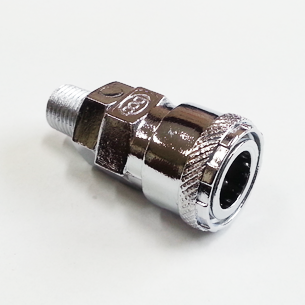
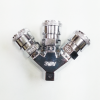
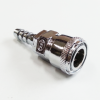
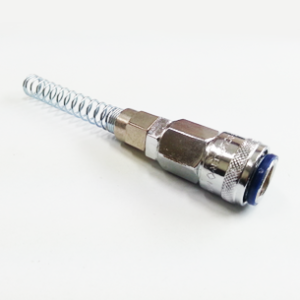
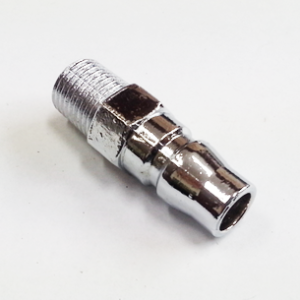
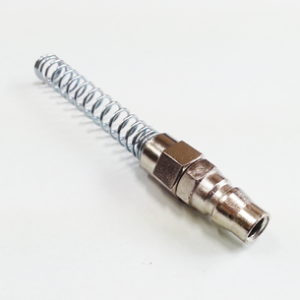
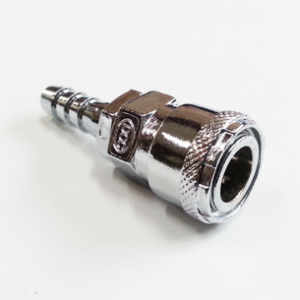
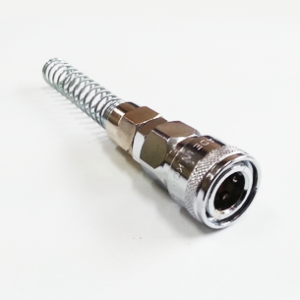
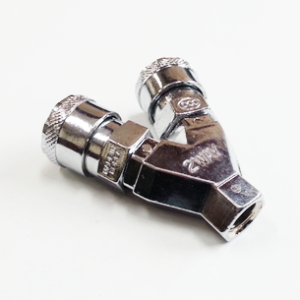
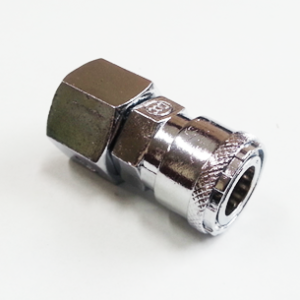
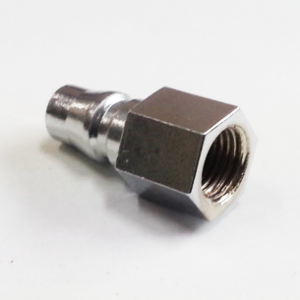
Reviews
There are no reviews yet.